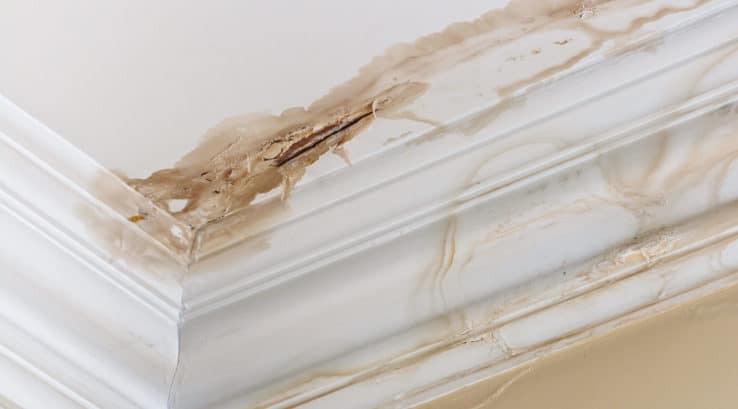Discovering a leaky roof is never a pleasant experience, and it may leave you facing a relatively quick repair or a time-consuming, costly replacement. Even a minor leak can result in water-stained woodwork, walls and ceilings, bulging drywall, mold growth, structural decay and other expensive damages to your home’s interior. A leak in the attic can also ruin the R-value of the insulation and drive up your household energy costs.
Getting familiar with the most common causes of roof leaks can help you limit stress, avoid unexpected repair costs and better protect your home and its contents.
Most Common Causes of Roof Leaks
A leak can happen whether your roof was installed recently or it’s 20 years old, and what causes roof leaks can vary. Here’s a look at the main reasons roof leaks occur and how to avoid them:
Missing or Damaged Shingles
Losing a swath of shingles during a storm is an obvious warning that your roof may start leaking, but the elements can take a more subtle toll with the same result. High winds can lift the shingle’s edges and break the adhesive seal between adjacent courses. The alternating effects of pounding rain, hail, storm runoff and UV radiation can strip shingles of their protective granules, leading to premature aging and leaks.
Clogged Gutters
A properly functioning gutter system is essential to capture rain as it flows off your roof and directs it safely away from your home. If your gutters are clogged with debris, water can back up under the outermost row of shingles and leak into your attic and exterior walls. In the winter, having clogged gutters increases the risk of damaging backups and leaks due to ice damming along the roof edge.
Advancing Age
Asphalt shingles are a durable roofing material, but with constant exposure to the sun’s harsh rays, they’re bound to deteriorate over time. As shingles age, the compounds that keep them flexible and waterproof naturally dry out. Shingles approaching or beyond their 20th birthday are likely getting brittle and starting to crack, and this is one of the primary causes of roof leaks.
Installation Errors
If your roof was recently installed and you experience a leak, it may be related to the quality of the installation work. Installation issues that can lead to leaks include incorrect nail placement, a lack of starter shingles or drip edge and missing or improperly placed flashing. Installation flaws are often what causes roof leaks early in a roof’s lifespan, rather than problems with the shingles themselves.
Flashing Flaws
Flashing plays a critical role in keeping the transitional areas of your roof watertight and protecting your home’s structure and interior from water damage. Areas where intact flashing is essential include the valleys around the chimney and any skylights, dormers, plumbing stacks or other penetrations through the roof. If the flashing is damaged, degraded due to age or installed improperly at either of these places, your roof can start leaking.
How to Avoid Roof Leaks
It’s impossible to control the weather, but you can minimize the risk of storm-related roof damage and leaks due to the other issues mentioned above. To accomplish these goals, keep your roof clean and free from debris, have it inspected regularly and get necessary repairs taken care of promptly. Replacing aged shingles before they reach the end of their useful lifespan can also help you avoid structural and interior damage due to roof leaks.
To schedule an assessment of your roof’s condition or receive a free, no-obligation price estimate for a new shingle roof, contact us at Thompson Creek or give us a call at (888) 696-7105. We have over 35 years of industry expertise, and we back every installation with our No-Hassle Warranty and Buyer Protection Guarantee.


